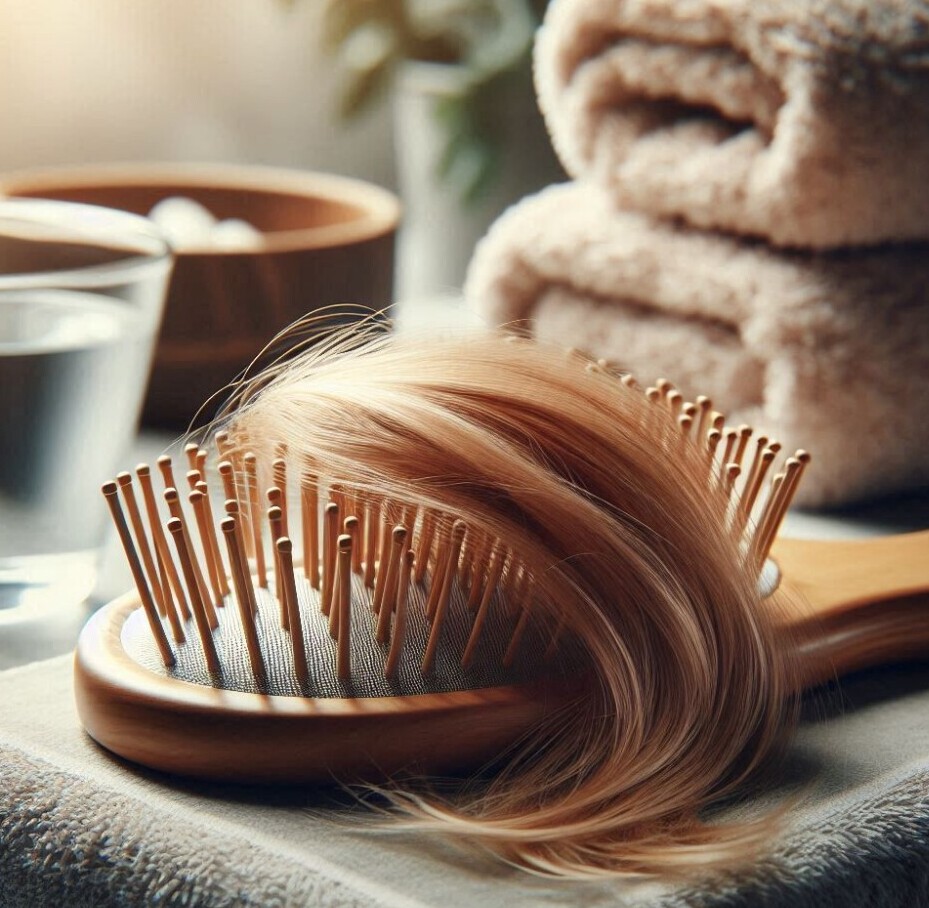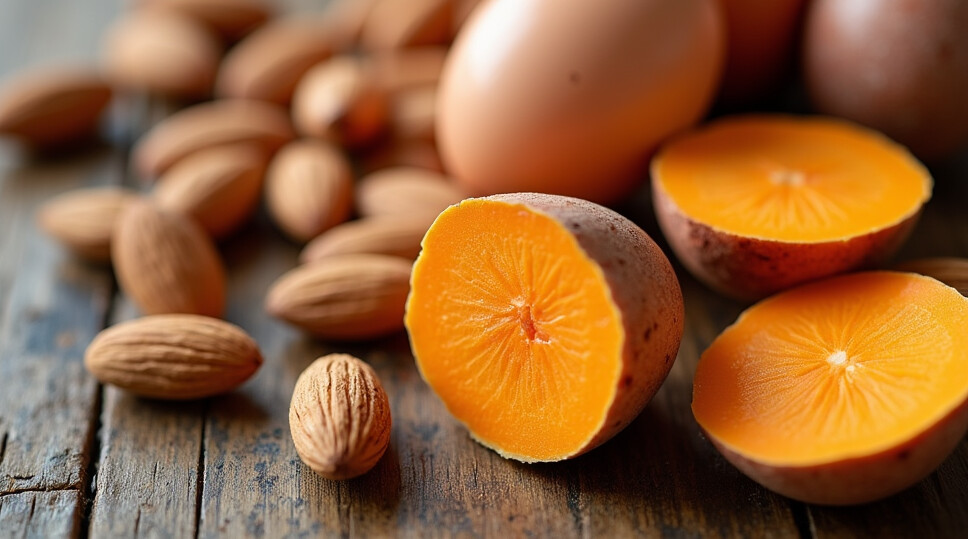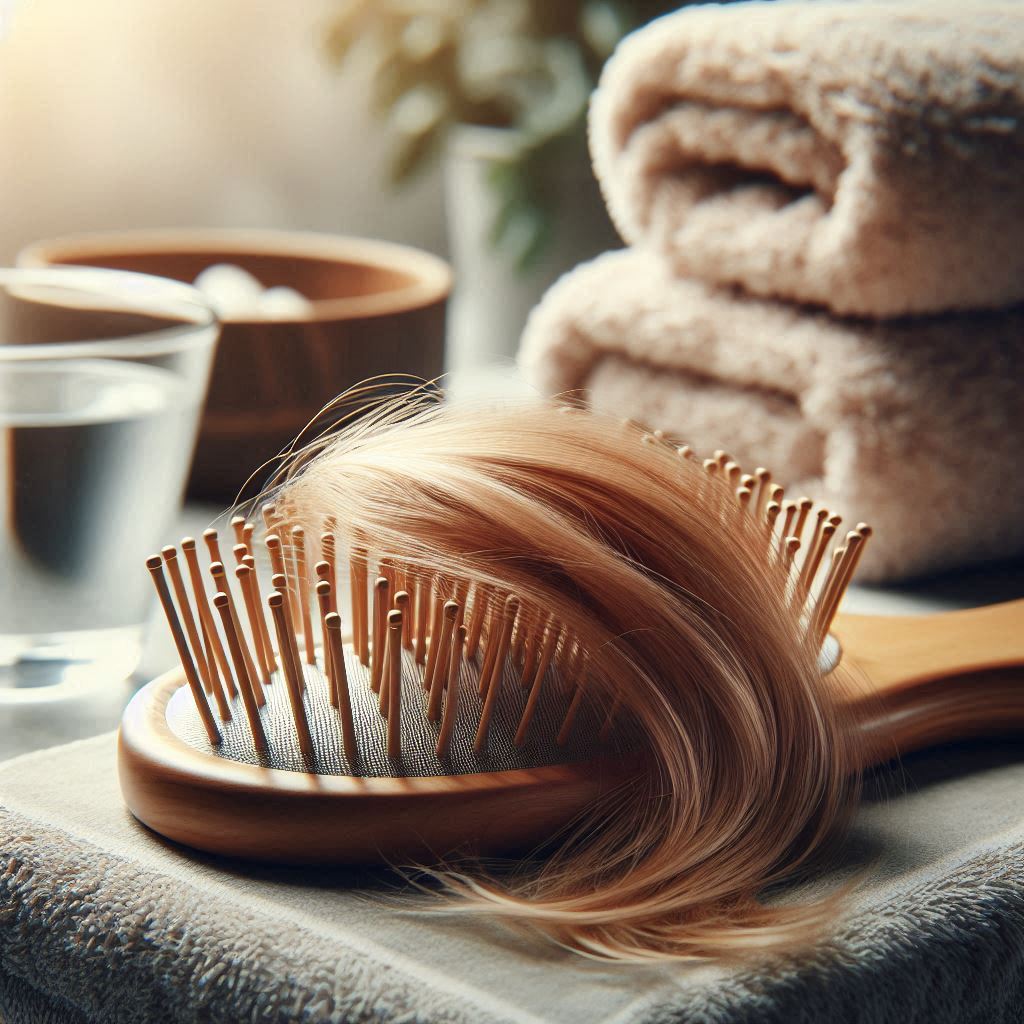Postpartum hair loss can be unexpected after childbirth. I experienced this change myself and understand how unsettling it can feel when your hair suddenly begins to thin. This article covers the causes of postpartum hair loss, natural ways to manage it, and practical advice to help maintain hair health during this transitional period.

What Causes Postpartum Hair Loss?
During pregnancy, high hormone levels (especially estrogen) help keep hair from falling out, resulting in that thick, luscious pregnancy hair. After childbirth, those hormone levels drop, and the hair that was previously “held in place” begins to shed all at once.
Here’s what you need to know:
- The shedding is temporary and normal.
- It’s simply your body returning to its pre-pregnancy hair cycle.
- Most people will see hair return to normal within 6 to 12 months after giving birth.
Understanding this natural shift can help ease stress and set realistic expectations.
What Influences the Amount of Hair Loss?
Postpartum shedding looks different for everyone. Some key factors that may affect how much or how long you shed include:
- Breastfeeding – Shedding may be delayed until weaning or a change in feeding routine.
- Stress levels – Emotional stress can increase shedding.
- Nutrition – Deficiencies in iron, zinc, or other nutrients can contribute.
- Genetics – Your hair’s natural growth cycle plays a role, too.
If you feel your hair loss is excessive or accompanied by other symptoms, it’s worth checking in with your healthcare provider, as thyroid issues can sometimes be a factor.
Natural Tips to Reduce Hair Loss
While you can’t stop the shedding completely, you can support your hair’s health and recovery with a few simple habits:
Nourish from Within
- Eat a balanced diet with plenty of protein, fruits, vegetables, and healthy fats.
- Include foods rich in iron, biotin, and zinc.
- Continue taking your prenatal vitamins postpartum.

Be Gentle with Your Hair
- Use a wide-toothed comb to detangle and avoid pulling on wet strands.
- Wash less frequently with sulfate-free shampoo and natural conditioners.
- Skip the heat—avoid blow dryers, flat irons, and curling tools for a while.
- Say no to harsh chemical treatments like coloring, perming, or straightening.
Caring for Your Hair (and Yourself)
Creating a simple, soothing hair care routine can help you feel more in control during a time of so much change.
Try This Routine:
- Use hydrating masks or oils (coconut, argan) once a week.
- Avoid tight hairstyles like ponytails or buns that pull on the scalp.
- Don’t over-brush—especially when wet.
- Focus on scalp care, not just the ends.
And don’t forget, your overall well-being matters just as much:
- Stay hydrated—aim for several glasses of water a day.
- Get as much sleep as you reasonably can (naps count!).
- Incorporate gentle movement or stretching when possible.
- Try calming activities—deep breathing, soft music, or just sitting quietly.

Understanding the Timeline: Patience is Power
It’s important to remember:
- Most noticeable shedding happens 2 to 5 months postpartum.
- If breastfeeding, hair loss might continue until weaning.
- Regrowth can be slow, but it’s happening—even if you don’t see it yet.
Try to monitor small signs of progress instead of expecting immediate results. Noticing new baby hairs or less shedding over time is a great indicator that your body is adjusting.
Final Thoughts
Postpartum hair loss is a natural and expected part of your body’s healing journey after pregnancy. While it can be tough to experience—especially during an already overwhelming time—it won’t last forever.
By supporting your hair with gentle care, good nutrition, and lifestyle habits that reduce stress, you’re giving your body what it needs to return to balance.
Remember: your body has done something incredible. Give it time, grace, and a little extra care.
Frequently Asked Questions
Question: How can I reduce my postpartum hair loss naturally?
Answer: Paying attention to nutrition and adopting gentle hair care practices are very important. Eating a balanced diet with vitamins and minerals—especially those known to support hair health like biotin and iron—can make a difference. Cutting down on heat styling and chemical treatments also helps limit additional damage.
Question: How long does postpartum hair loss last?
Answer: For many women, hair shedding can be noticeable for several months after childbirth. If you are breastfeeding, the shedding might continue until you adjust your feeding routine. Generally, by the time your child turns one year old, the rate of hair loss should decrease and your hair may gradually return to its pre-pregnancy look.
Question: Does getting a haircut help with postpartum hair loss?
Answer: While a haircut does not stop the shedding at the scalp, trimming split ends can make hair appear thicker and healthier. Regular haircuts help maintain a neat look and prevent further breakage during the shedding phase.
Question: Does every woman experience postpartum hair loss?
Answer: Most women do notice some degree of hair shedding after childbirth due to hormonal changes. However, the severity varies. While many find the process manageable and temporary, some may experience more noticeable thinning depending on factors like genetics and overall health.
Personal Reflections and Final Considerations
Going through postpartum hair loss has been a learning experience for me. I recognized early on that this phase, while challenging, is a natural part of the body’s reset after childbirth. By following a gentle hair care routine, eating a balanced diet, and making mindful lifestyle adjustments, I was able to support my hair through a tough period. Each small step contributed to my hair’s gradual recovery and helped me appreciate the resilience of my body.
Regular checkups and open conversations with health professionals helped me distinguish normal postpartum changes from other issues that might require attention. Sharing experiences with other new mothers also provided comfort and perspective, reminding me that I was not alone during this testing time.
Over time, as hormone levels stabilized, I observed a steady return to healthier hair growth. I also reassessed my overall health habits, ensuring that I was nurturing not just my hair but my entire well-being.
In the end, supporting your body during this transition is really important. Small, deliberate changes—whether through diet, gentle styling, or stress management—can make a significant difference. With time, patience, and a commitment to self-care, the temporary shedding phase will gradually give way to renewed, healthier hair.


Hello Rebecca!
Thank you for this informative article on overcoming postpartum hair loss. Your practical tips, such as maintaining a balanced diet rich in biotin and omega-3 fatty acids, using gentle hair care products, and avoiding tight hairstyles, are invaluable for new mothers experiencing this common issue. I appreciate your emphasis on patience, as understanding that this phase is temporary can be reassuring.
I’m curious, do you have any recommendations for specific products or routines that have been particularly effective in promoting hair regrowth during this period? Additionally, how can partners support mothers dealing with postpartum hair loss in a way that fosters empathy and encouragement?
Angela M 🙂
Thanks Angela – I’m so glad the article is valuable.
While you can’t prevent postpartum hair loss, certain products and routines can help support regrowth:
Shampoos & Conditioners: Choose sulfate-free options for gentle nourishment.
Hair Oils & Scalp Treatments: You could use natural oils like coconut or argan to promote scalp health.
Supplements: Continue with prenatal vitamins, or consider supplements for added support.
Routine Tips:
Wash 2–3 times a week, and massage your scalp daily.
Use oil treatments weekly to nourish strands.
Avoid tight hairstyles, excessive brushing, and heat tools.
Partners can help by being empathetic and proactive:
Offer reassurance: Validate her feelings—“I know this is tough, but you’re beautiful no matter what.”
Help with self-care: Encourage hair treatments, or buy products she enjoys.
Be patient: Acknowledge the challenges of this phase, and be supportive as she navigates the process.
Simple empathy and practical support make a huge difference!
I hope this helps